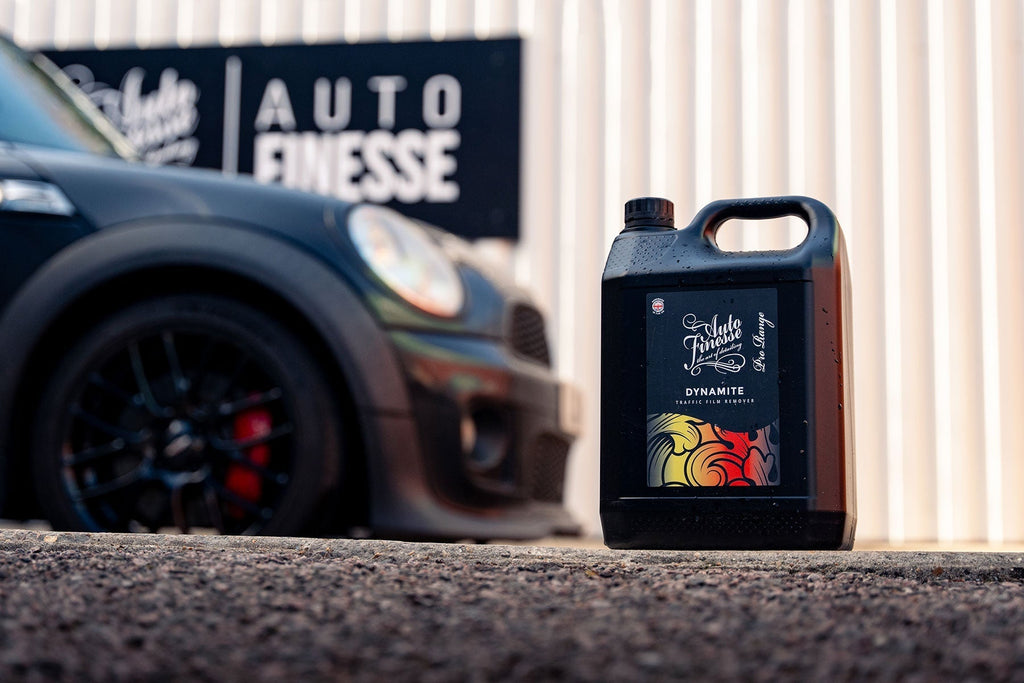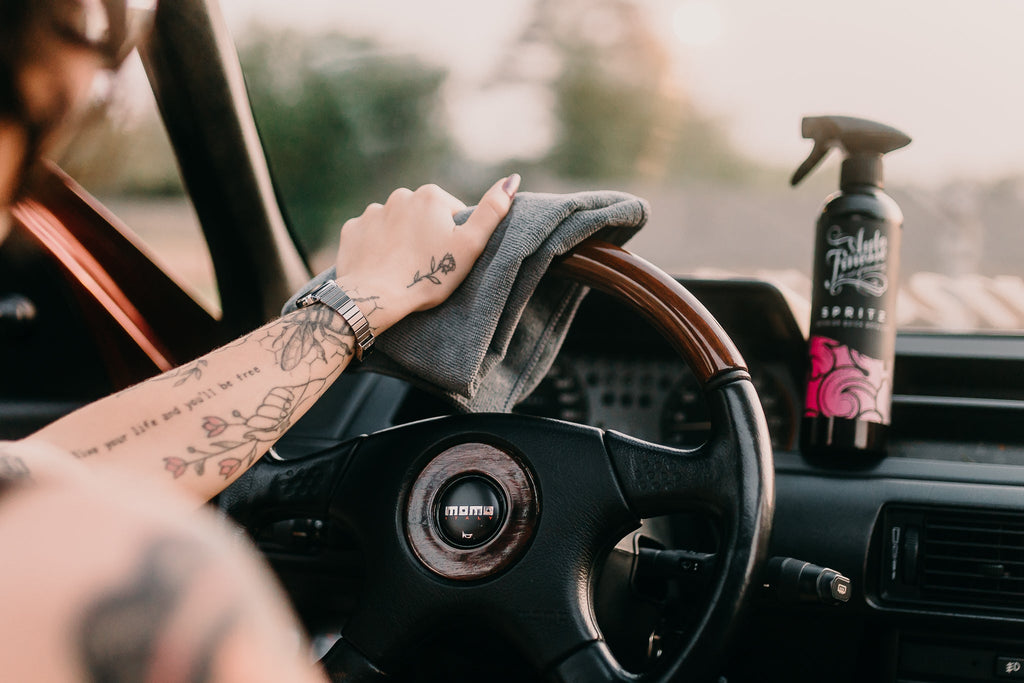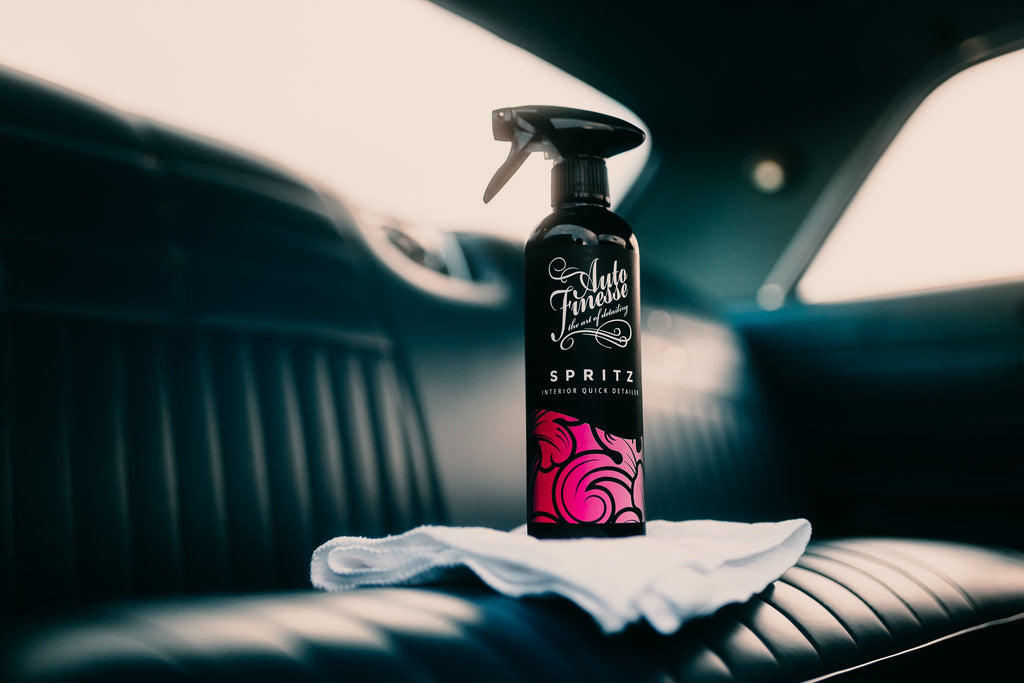Car Polishes And Compounds Explained

IN THIS FREE GUIDE:
- Learn the differences between car polishes, compounds and liquid waxes.
- Discover exactly what these types of products do, what they contain, and how they work.
- See the products you can use to achieve the ultimate finish.
Learn the differences and get professional results!
It's the age-old question when it comes to the best detailing products, isn't it? What's the difference between a car polish and a car compound? And, technically at least, the answer is not a lot. But, that said, there's plenty more to car polishes and compounds, along with all-in-one products than meets the eye, and there's always a whole load of confusion about what they contain, and how they work.
So, with all that in mind, allow us to lay out everything you need to know by answering all those commonly asked questions…



What Is A Car Polish?
Car polishes and compounds are detailing products that contain abrasive particles which are used for the controlled removal of a small (often microscopic) amount of the top layer of a given surface. This action has the effect of leveling out and smoothing the very top layer through mechanical abrasion, a process known as 'cutting'.
Unless otherwise stated (as with products such as Mercury Metal Polish), a car polish is a general term for a product designed for use on vehicle paintwork to remove (or reduce the appearance of) defects such as swirl marks and scratches. The idea isn't so much the physical removal of these blemishes, as in reality this isn't possible, instead 'removal' is more of a descriptive term because any abrasive compound will only level down the paintwork around the defect, until the very bottom of the deepest part is reached. This means the defect is no longer below the surface, making it disappear, just like if you had a pothole in the road and you dug down through the rest of the tarmac, until the surface is perfectly level, there would no longer be a hole. This is the principle of all paint correction processes.
What's also important here is that a stand-alone polish (or compound) is used specifically for this reason, it won't add any protection to the surface and it's not designed as a last step product (LSP) like waxes, sealants and coatings. LSPs will not cut or refine paintwork because they don't contain abrasives.

What Is A Compound?
Although many use the generalised term "compound' for paint correction products that contain relatively coarse abrasives, these are still designed to carry out the physical process of polishing surfaces and this, technically at least, makes them a type of polish, regardless of the grade of abrasive used.
The word compound actually refers to the chemical makeup of the product, rather than the action it performs. So, all compounds are polishes (because they polish) and all polishes are compounds, or more accurately chemical compounds. These are also simple examples of 'suspensions', or solid particles (the abrasives) suspended in a liquid carrier. The carrier base can range in viscosity from a relatively thin fluid base to a thick, viscous base like a paste.
Polishes and compounds are available in various grades, which refers to the coarseness of the abrasive particles in the suspension. This is directly proportional to the amount of surface that the particular product is expected to take away, or its "level of cut'. A coarse car polish or compound has a higher level of cut, because it takes away more of the surface as it is used.



How Do Abrasive Products Work?
Abrasives scrub or grind away at the surface layer until it's flat, and this in turn gives it more clarity.
Imagine the glass in a picture frame, if it's hazy and milky, you won't get a clear view of the image underneath. This is the same principle for paintwork, a top layer (which, in the vast majority of cases is actually clearcoat) containing defects doesn't allow you to see all the way through without obstruction, this makes paintwork appear dull and shallow. Clearing away surface defects with a spot of polishing enhances clarity and allows you to view the full beauty of what's underneath, this also creates the optical illusion of the paintwork being deeper and shinier.
Scientifically speaking, the overall effect is all down to how light reflects off the surface and bounces back to your eye. If the surface is full of defects, on a microscopic level it isn't particularly flat, this not only diffracts the light in different directions highlighting the defects in question, but it blocks and reflects it straight back from the very top. A smoother, flatter surface lets light through to the colour coat and bounces back to make the paintwork appear deeper. This will also allow light to refract in a more uniform manner, giving a glossier appearance. The thing to remember is that it's not the lacquer you actually want to see, it's the paint underneath.
The special "diminishing' abrasives we use in in our detailing products are also extremely advanced. These are designed to break down as they're worked through, basically smashing into each other, breaking up and becoming smaller, finer particles, until they stop cutting. This is like sharp jagged rocks being bashed together until, eventually, they're eroded into much smaller rounded pebbles. In detailing terms we call this working the product through and in most cases this is achieved when the compound is no longer cutting, and the residue turns clear.
In some cases, as with Tripple All-in-One Car Polish, diminishing abrasives are easy to work through, making it suitable for hand polishing. In other instances, as with One Step All-in-One Compound which starts as a coarse compound, the diminishing abrasives are engineered to extend the range of cut far beyond that of a traditional compound… although we'll get to that shortly.




What's The Difference Between Cutting And Refining Paintwork?
As for refining paintwork? Well, people often talk of the difference in cutting and refining, but the truth is that refining any surface is actually the same as cutting, just on a finer scale.
Relatively speaking, a coarse abrasive, with a higher level of cut, will cut away more of the top layer as it's worked through to remove heavier defects. But, because the abrasive is coarse, it will leave behind its own hazy surface or holograms that need to be removed to refine the final finish.
Just like you'd use a coarse sandpaper to shape wood, before using progressively finer grades of sandpaper to give the surface a smooth finish. We use finer and finer abrasives to refine paintwork and, if necessary, remove the defects caused by the prior coarse abrasive. This of course also allows the light to shine through in a more uniform fashion, adding to the gloss. This is the reason that, in a multi-stage correction, you always start with the coarsest compound necessary to cut away the harshest defects, and then work with progressively finer compounds to refine the finish. It's also the reason we developed our Revitalise V2 System, which contains three progressively finer compounds. Our Pro Compound Kit also offers three pro-grade machine polishing compounds for all levels of cutting and refinement. Our collection of polishing compounds are designed to help you achieve professional results at home, and are also available in comprehensive bundles such as our Master Machine Polishing Kit and Complete Machine Polishing Kit which include our full body DPX Dual Action Machine Polisher.
The reason we refine down paint is that, gradually, the ridges in the surface are so microscopic, that they're completely invisible to the eye. Imagine a piece of glass, you can see all the way through it, right? But deep down the surface will still have minuscule defects, you just can't see them. Refining paintwork uses the same principle - you're using fine abrasives to get the surface as level as possible on a microscopic scale.

What Are All-In-One Polishes?
An all-in-one polish (or compound) denotes characteristics that go beyond that of a traditional polishing product. In most cases this means that the product is designed to not only use the abrasive part for cutting and refining but will contain other elements within the carrier that are suited to performing other tasks. Tripple All-in-One Polish, our flagship car polish, is a great example because it's designed to clean, refine and protect in one application. The fine abrasives will lightly refine and restore clarity to paintwork for sure. But, combined with the addition of deep-cleansing solvents, it will also clean away oxidation. Tripple also contains glazing agents and is infused with carnauba wax so it will fill fine swirls and leave behind a layer of wax protection - a three-pronged approach that not only makes paint enhancement speedy and straightforward, but gives it its name, too.
One Step Compound, on the other hand, is a next-generation compound which is denoted as an all-in-one due to the fact that it has a uniquely wide range of cut. Where traditional compounds and polishes are limited by a grade of abrasives that can only be broken down so far. The reason why it may be necessary to use multiple grades through a multi-stage correction. In essence, a coarse compound will always be a coarse compound until it stops cutting and it's the same story with fine compound.
One Step is different, it's designed to start off as a coarse compound and breaks down to a fine compound as it's worked through continuing to cut through all stages. This means that it can take care of everything from a heavy-medium cut, right down to creating a refined, flawless finish. And that's without having to change product and pad along the way.

Do Waxes Work In The Same Way?
As well as hard waxes, liquid and spray waxes work in the same way as glazes to level the optical finish by leaving behind a smooth, transparent layer which, to an extent, fills and obscures light defects. Like glazes too, they also contain no abrasives making them finishing, rather than correction, products. But, what's most important here that, unlike a glaze, all waxes use this layer to offer protection from the elements.
Where liquid and spray waxes differ from hard waxes (apart from the obvious being a liquid bit, of course) is in the ease of application and the period of durability. Technically speaking, a liquid wax can be a thin sprayable liquid, or highly viscous cream-like product applied using an applicator, but what's important to remember is that the thinner the liquid, the less solids are contained in the solution, and the less durability it will have. Conversely of course, the thinner the liquid, arguably at least, the easier it is to apply and buff away residue. This ease of application is the reason liquid and spray waxes are the most commonly applied LSPs in the mass market, even if plenty of detailers prefer the look and durability of a hard wax (like those in our Signature Wax Collection), even with the extra effort involved in application.
Unlike a car polish or compound, which is classed as a suspension, a liquid or spray wax is technically a solution, which means a solid solute (the natural wax, synthetic wax/polymers or wax emulsion) dispersed and suspended in a liquid (the solvent base). Basically, when in use, the solvent is designed to evaporate, or flash off, to leave behind the protection layer. The thinner the liquid, the quicker the product will be to use.
Glisten Spray Wax, our solvent-based, wax emulsion-infused spray wax is one of our most popular protection finishing products. Being a spritz and wipe application, this is the most effortless product to use for a deep gloss and ideal for topping up previously-applied wax protection. This still gives a good month of protection and enhanced water-beading. Glisten can also be used on any paint type, including matt and satin vinyl wraps, and is ideal for treating those hard to reach areas inside shuts and panel gaps.










Glisten is a high-tech spray car wax specifically developed for a speedy finish with 4-weeks of protection and acres of gloss… and all with nothing more than a... See product details More
And that should be everything you need to know on different polishes and compounds… with a few protection products thrown in for good measure.
Check out more top product knowledge in the Guides Section Of Our Blog.
























